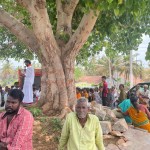On May 10, Karnataka, a key southern state in India, will go to the polls and elect a government for itself for the next five years. The outcome of these state elections are important for India for multiple reasons. Internationally, the global tech hub of Bengaluru is the capital of Karnataka and its state of mind matters. Domestically, Karnataka is the only foothold the ruling Bharatiya Janata Party (BJP) has in south India. The winning political party will have an impact on two important upcoming state elections in Madhya Pradesh and Rajasthan this year, and on the national elections next year.
Prime minister Narendra Modi has spent six days campaigning in the state, doing up to five public meetings and road shows a day – a rigorous schedule for any politician, let alone one who is concurrently chairing significant global and regional meetings at home, i.e., the G20 and the SCO (Shanghai Cooperation Organisation). Still, Modi the vote-catcher has been on the stump, enthusing the voter base of Karnataka and his own partymen.
The voters and the BJP party rank-and-file need the bucking up. For the last decade, Bengaluru has soared in the global rankings as a top technology destination with an ecosystem comparable to Silicon Valley. The current chief minister Basavaraj Bommai reminds that over 400 of the Fortune 500 companies have operations there. But the city’s physical infrastructure has lagged its growth, a casualty of the big ‘C’ in the state’s politics: Corruption. While Bengaluru’s unicorns and talent are world famous, so are its traffic jams, making it difficult and often expensive to operate from.
The corruption in Karnataka is political party-neutral. All three of state’s political players – the BJP, the Congress and the JDS (Janata Dal Secular) – suffer from it, and at election time, two more C’s are added to the combustion: Caste and Candidate. Four castes form the leadership and vote bank of Karnataka – the Lingayats, the Vokkaligas, the Scheduled Castes and Tribes, and the Dalits. And the candidate base is full of dynasts – an estimated 80 of the total 224 seats are being contested by family members of existing rulers.
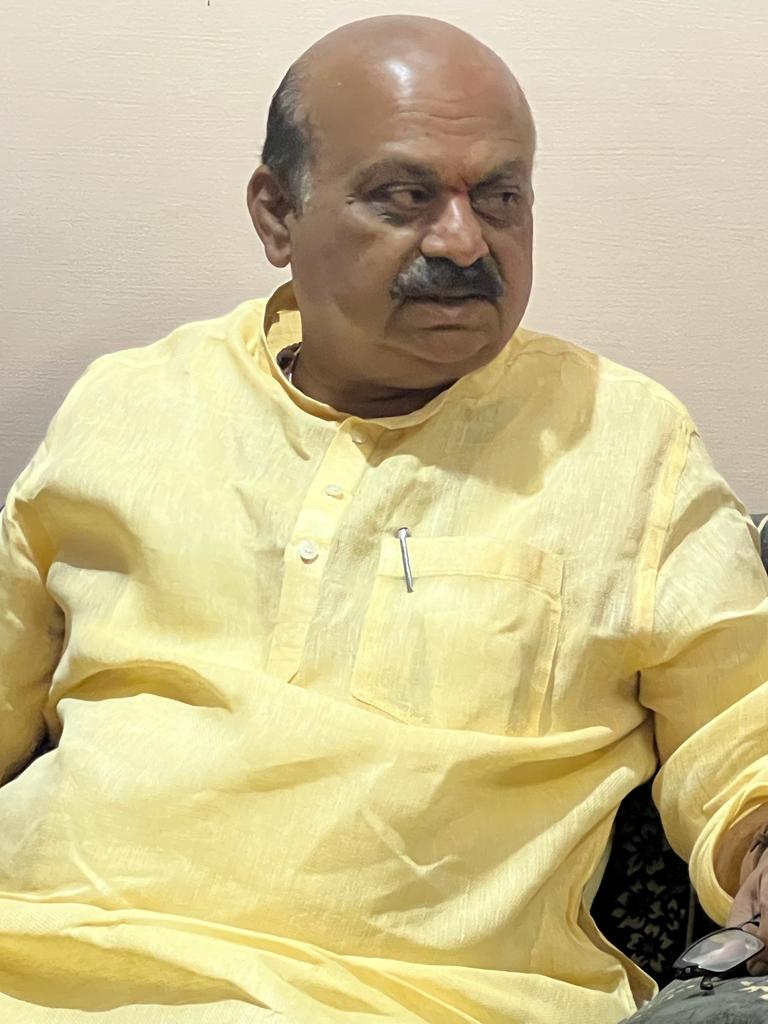
The competitive politics between these four castes and the many dynasties are on full display in the lead-up to the elections. Each have powerful and magnetic leaders: the elder statesman, B.S. Yedurappa who presides over the BJP and its chief minister Bommai; the popular vote-getter Siddhiramaiah of the Congress party and his in-party competitor the smooth D. K. Shivakumar who is the chief fund-raiser and strategist. The king maker is JDS’ H. D. Deve Gowda, a farmer who was Karnataka chief minister before becoming India’s prime minister for a year in 1996. Both his sons are in the fray: H.D. Kumaraswamy, also a former chief minister and his older brother Veeraswamy. So too are the sons of Yedurappa and Siddharamaiah, neither with the charisma of their fathers.
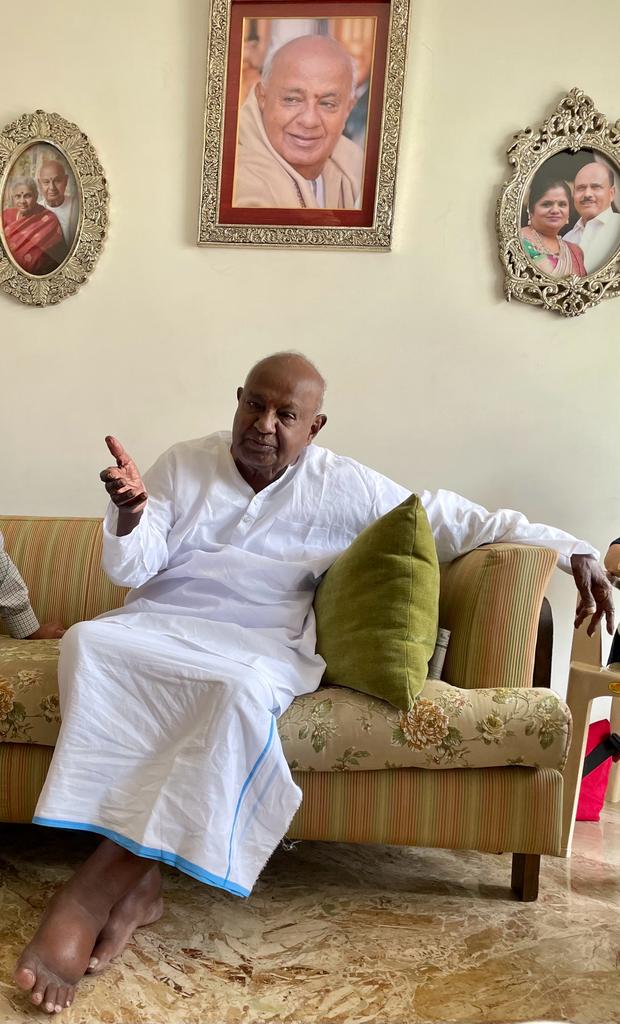
The political campaigning and parleying is heated and hectic, but seems oddly disconnected from the entity that is Karnataka. Few of the issues seen and experienced in other parts of India – achieving literacy, overcoming poverty and providing employment – apply to Karnataka.
For Karnataka by itself, is a middle-income country. The state is a $130 billion[1] digital economy and the third highest numbers of start-ups in the world[2] are incubated in the state. Per capita GDP at Rs. 3.3 lakhs or $3,678, is the highest in India, just below tiny Goa and Sikkim and 77% higher than the national average[3]. Karnataka is growing at nearly 8%, making it the largest fastest-growing state in the country. It contributes 8.2% to India’s overall GDP. By 2032, Karnataka aims to become a $1 trillion economy.[4]
It is also blessed by nature. The soil of Karnataka is fertile, lending itself to cash crops like areca nut, cashew, mangoes, along with basic vegetables like onions, making its farmers comfortable. New techniques like drip irrigation are deployed to great benefit. It is rich in minerals like gold and iron and quarries of granite and marble – both a perennial source of political and business corruption. Literacy at 75% is a tad higher than India’s average of 74%, but Bengaluru’s literacy rate at 88% is much higher.

The city is an irresistible draw to youth across the state – in 2021-22, it created 1 million jobs[5] which is 11% of formal employment[6] in India – and the boys and girls from villages work in Bengaluru or Mysuru to be part of the exciting tech ecosystem there. “A tech-driven society has been created,” says chief minister Bommai. Not surprising then, that unlike other parts of India where, during elections, there are large numbers of young men loitering around, Karnataka has almost none. Campaign crowds are largely older people – and young people if they are home for holidays or weddings.
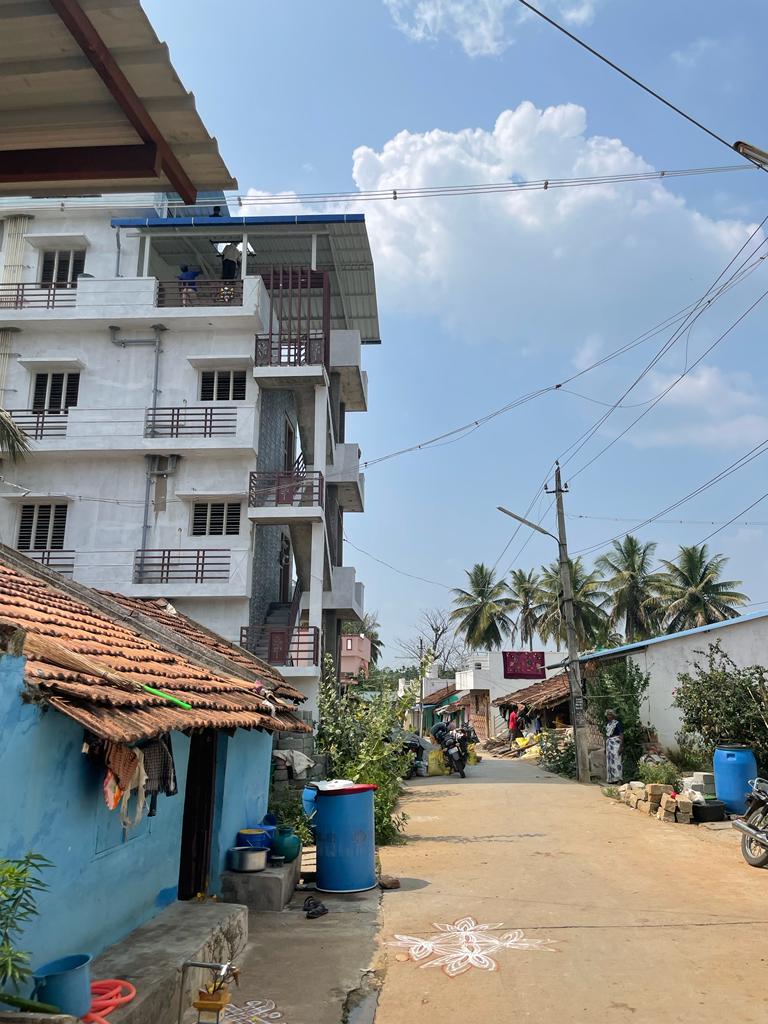
Education and technology have led to prosperity in many ways. Voters know how to use the campaign pledges well and hold their politicians to their promises. They also use the multitude of welfare schemes provided by the central, state and local government, to their best advantage. This is visible in the physical improvement of rural Karnataka – which is now falling in line with India’s leading digital infrastructure. Most villages have concrete roads from the highway to their main and smaller streets; they have electricity, sanitation, and water at home. Scooters, mobikes and even four-wheel drives are parked outside homes. Some villages like Sunnadahalli in Shimoga district, are building three storey homes – becoming tiny towns.
It is in these buildings and on these concrete village roads that political, social, economic, and digital Karnataka intersect, where changing India and changed India meet.
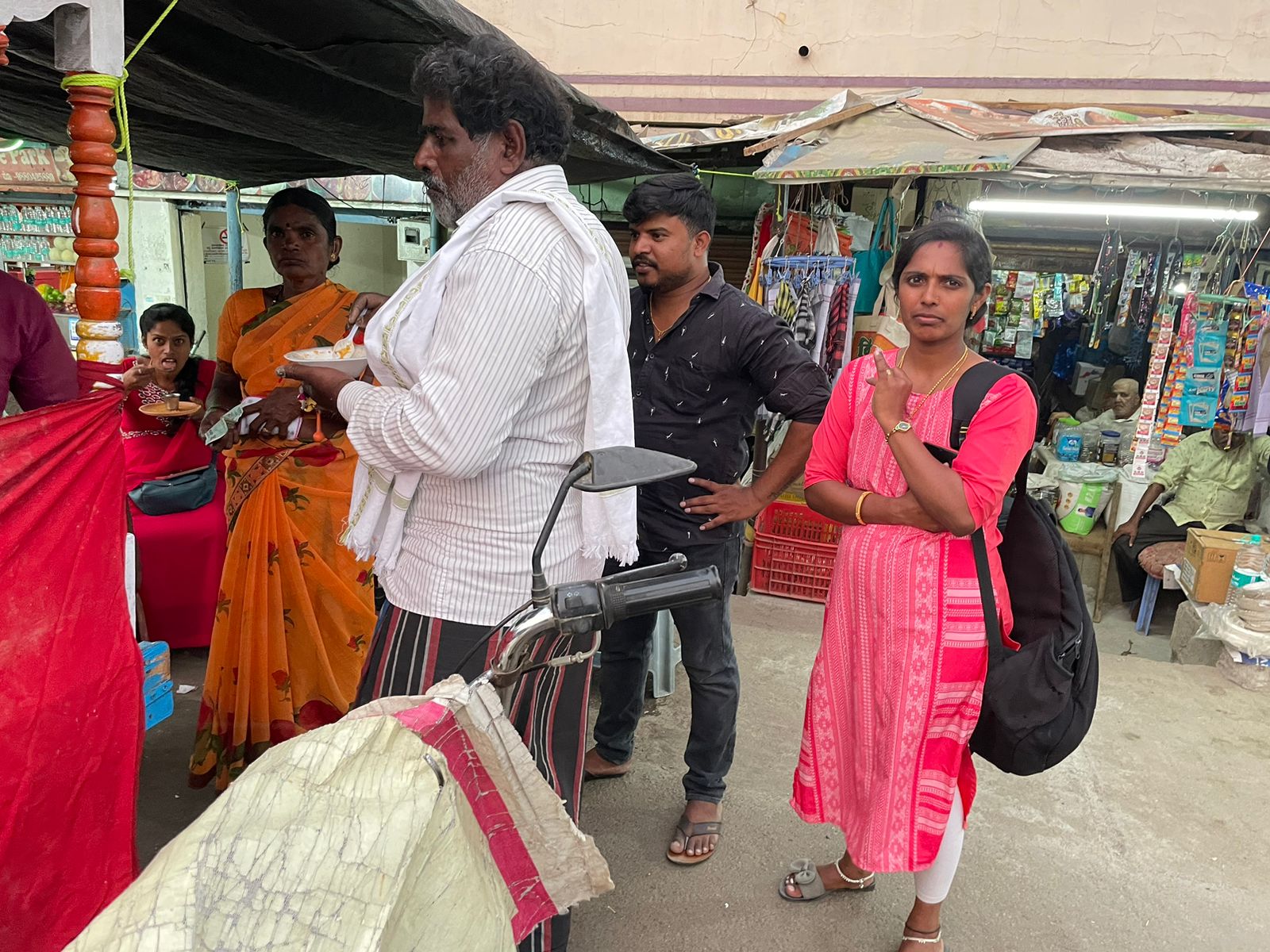
There is evidence of this everywhere. Anita Gowda is enjoying her paani-puri at a stall in Ramanagara village, in whose hills the famous film Sholay was shot. She is a college graduate, and works with Madura Garments, part of the large Aditya Birla Group conglomerate. In a single breath, she talks about her work and also about her caste identity – Vokkaliga. She says she will vote for JDS, because she is a Gowda like H.D. Deve Gowda. There is no dissonance.
Zafar and his father Husain are from Korlahalli, about two hours from Bengaluru. Zafar works in the finance department of Budweiser in the city. These days he works from home and helps his father in the fields when free. He laments the lack of broadband connectivity, but his Airtel dongle does the trick.
His family are among those farmers who are doing well. Tractor sales are booming, enabled by the easy availability of finance and government subsidies. “Farmers are making money,” says Mahendra P., a cheerful 24-year-old management graduate from Tarikere, a political hotseat. “The complete cycle is booming.” He runs his father’s tractor parts business and says 40% of his payments come through digitally. He thinks none of the candidates in his town are worth his vote, so he is giving it to Prime Minister Modi, who he says has “empowered youth” though he can’t say exactly how.
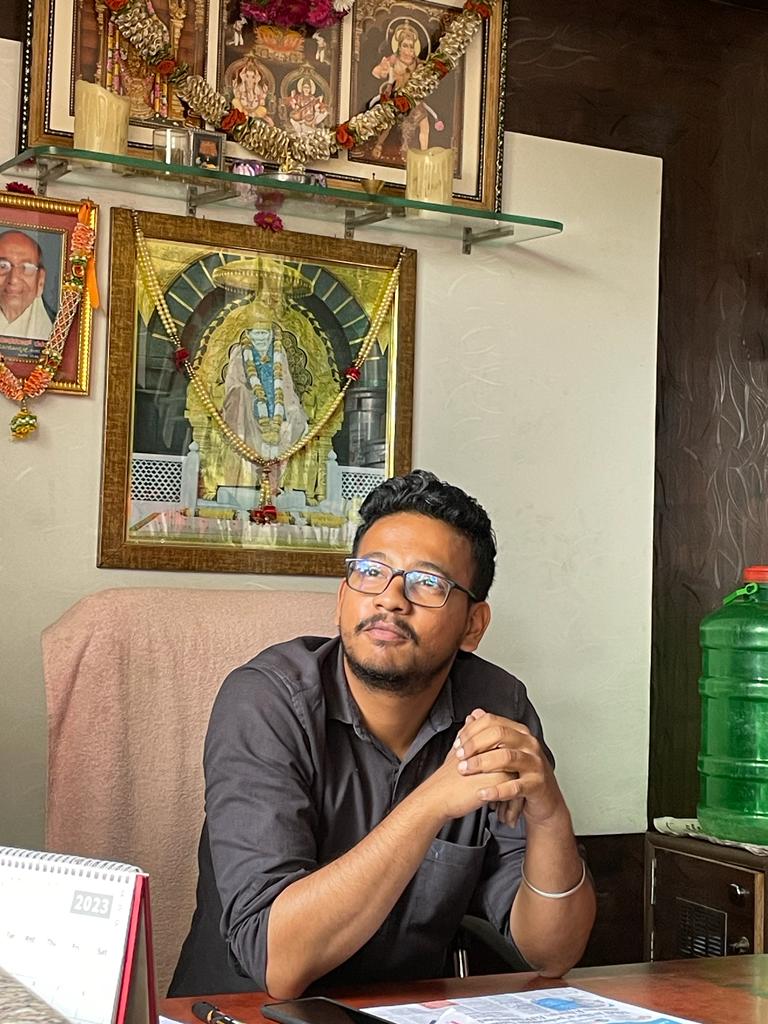
Some young Kannadigas say they will vote for “security” – a euphemism for a Hindu vote, which will go to the BJP. But those like Zafar feel despondent seeing strains in Hindu-Muslim amity, and worry; this election, they will vote Congress, which claims the secular status.
Mahendra of Tarikere also has deep thoughts on communal harmony and on caste. Like Zafar, he is bothered when he hears of Hindu-Muslim problems. “India is a diverse country; it can’t exist only for Hindus,” he says. On caste – he sees it playing a role in the election, but hopes that in 10-15 years, there will be no such division to influence voting patterns.
Hopefully. But for now, Indians continue to identify by their caste, playing into the calculation made by Karnataka’s politicians. The race to control the Assembly of Karnataka is tight, and all three main parties are confident of winning. The battle is really between the BJP and the Congress, both of which have much to lose and much to gain, especially in the run-up to the national polls in 2024. Regardless of the political outcome, Karnataka the economy, led by its talent, will move forward and continue to be a key driver for India’s progress.
Manjeet Kripalani is the Executive Director, Gateway House.
Photo credits: Manjeet Kripalani, unless specified otherwise.
This article was exclusively written for Gateway House: Indian Council on Global Relations. You can read more exclusive content here.
Support our work here.
For permission to republish, please contact outreach@gatewayhouse.in.
©Copyright 2023 Gateway House: Indian Council on Global Relations. All rights reserved. Any unauthorised copying or reproduction is strictly prohibited.
References
[1] “Karnataka’s Digital Landscape,” Karnataka Digital Economy Mission, https://karnatakadigital.in/.
[2] “Karnataka,” India Brand Equity Foundation, https://www.ibef.org/states/karnataka-presentation
[3] “Economic Survey of Karnataka 2022-23,” Planning, Programme Monitoring and Statistics Department, https://des.karnataka.gov.in/storage/pdf-files/Economic%20Survey%202022-23%20English.pdf
[4] Pai, T V Mohandas, and Nisha Holla, “Karnataka: A $1 Trillion GDP Vision,” 3one4 Capital, Sept 2022, https://planning.karnataka.gov.in/storage/pdf-files/Latest%20News/Karnataka%202022-One%20Trillion%20GDP%20Vision-Mohandas%20Pai%20Nisha%20Holla.pdf
[5] “Karnataka’s Digital Landscape,” Karnataka Digital Economy Mission, https://karnatakadigital.in/.
[6] Pai, T V Mohandas, and Nisha Holla, “Karnataka: A $1 Trillion GDP Vision,” 3one4 Capital, Sept 2022, https://planning.karnataka.gov.in/storage/pdf-files/Latest%20News/Karnataka%202022-One%20Trillion%20GDP%20Vision-Mohandas%20Pai%20Nisha%20Holla.pdf.


